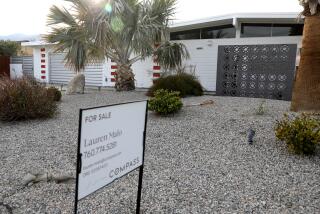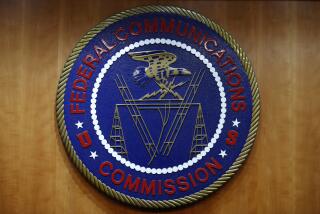Column: You can thank the coronavirus for plunge in robocalls
Like most of us, Elaine Regus and her husband have adapted to being home most of the day, except for the occasional walk around the neighborhood.
The San Dimas resident told me that in the past, they’d typically find several messages from robocallers awaiting them any time they returned home.
“These days, nothing,” said Regus, 68. “We’re wondering what happened.”
What happened is there’s finally something good to say about the otherwise rotten coronavirus pandemic.
The volume of robocalls nationwide has plunged as overseas call centers have closed for lockdowns and social distancing, according to YouMail, an Irvine tech company that tracks robocall volume on a monthly basis.
Robocalls are automated, of course, but the most annoying ones often try to connect you with a live operator to close the deal, such as signing you up for a high-interest credit card or, worse, committing some act of fraud.
With call centers in India, the Philippines and elsewhere shut down for the coronavirus, many of these scammy companies have simply stopped making calls.
“The pandemic is disrupting everything,” said Alex Quilici, chief executive of YouMail. “So you can say this is a benefit of the coronavirus.”
He told me that about 4.1 billion robocalls were received by U.S. households in March — more than 132 million a day.
That might sound like a lot — and it is — but it’s 700 million fewer than the 4.8 billion robocalls logged in February, and way less than the record 5.7 billion registered in October.
I passed that along to Regus.
“I love it,” she responded. “That’s just great.”
Indeed, a decline of 700 million calls is nothing to sneeze (or cough) at.
But don’t get complacent.
Quilici said most overseas robocallers may now lack the infrastructure for their employees to work from home, but that will quickly change.
“The robocallers are smart,” he said. “Like the rest of us, they’re figuring out how to get around the pandemic.”
In other words, just as most Americans have taken a crash course in telecommuting, so are the robocallers.
Quilici said we should expect robocall volume to pick up again in coming weeks as overseas facilities lay the groundwork for transferring calls to workers’ homes.
As it happens, help is on the way.
The Federal Communications Commission said this week that it’s abandoning plans for U.S. telecom companies to voluntarily implement state-of-the-art methods for reducing robocalls.
Now such measures are mandatory.
The FCC is giving the industry until June 30, 2021, to roll out what’s known as “Shaken/Stir,” a system that allows telecom companies to verify that a call is from who it says it’s from.
This addresses the problem of “spoofing,” which is technology employed by robocallers to make it appear to recipients that a call is from a known source, such as a neighbor, your kid’s school or the local police department.
Shaken/Stir has been in the works for years. A techie involved in developing the industry-created system told me his team “tortured the English language” to cook up an acronym that allowed them to indulge their James Bond fanboy nerdiness.
When a call originates, Shaken/Stir issues a digital “token” or “signature.” That marker is verified before the call makes its way to the recipient.
Consumers can expect to see a symbol on their screen — a check mark or a thumbs up — notifying them that a call is legit.
If you receive no such notice, you can still answer, but the chances of it being a robocall are much higher.
The FCC estimates that “eliminating the wasted time and nuisance caused by illegal scam robocalls” will save consumers about $3 billion a year in lost productivity (not to mention aggravation).
It also says Shaken/Stir can help protect people from “fraudulent robocall schemes that cost Americans approximately $10 billion annually.”
FCC Chairman Ajit Pai said a number of telecom companies heeded his call last year for a voluntary rollout of Shaken/Stir.
“But it’s clear that FCC action is needed to spur across-the-board deployment of this important technology,” he said.
That’s a polite way of saying too many industry players were either dragging their feet or balking at the multimillion-dollar price tag of adding Shaken/Stir to their networks — even as customers complained daily that robocalls were driving them crazy.
“The threat posed by these calls is particularly apparent now, with phone scammers preying on Americans’ fears during the coronavirus outbreak,” Pai said.
He said scammers are spoofing phone numbers to make it look like a call is from a local public-health department when it’s in fact “an attempt to steal their Medicaid and Medicare information.”
Pai also said utilities in California and elsewhere have warned of spoofed calls that fraudulently threaten service cutoffs if recipients don’t pony up some cash.
Experts say Shaken/Stir won’t solve such problems overnight.
The technology “can’t be effective until everyone participates,” said Joe Weeden, vice president of Metaswitch, a London communications software company. “It’s going to take time.”
Still, getting the entire industry to play ball is a big step in the right direction.
And with everything else going on, a few hundred million fewer robocalls helps a little.







